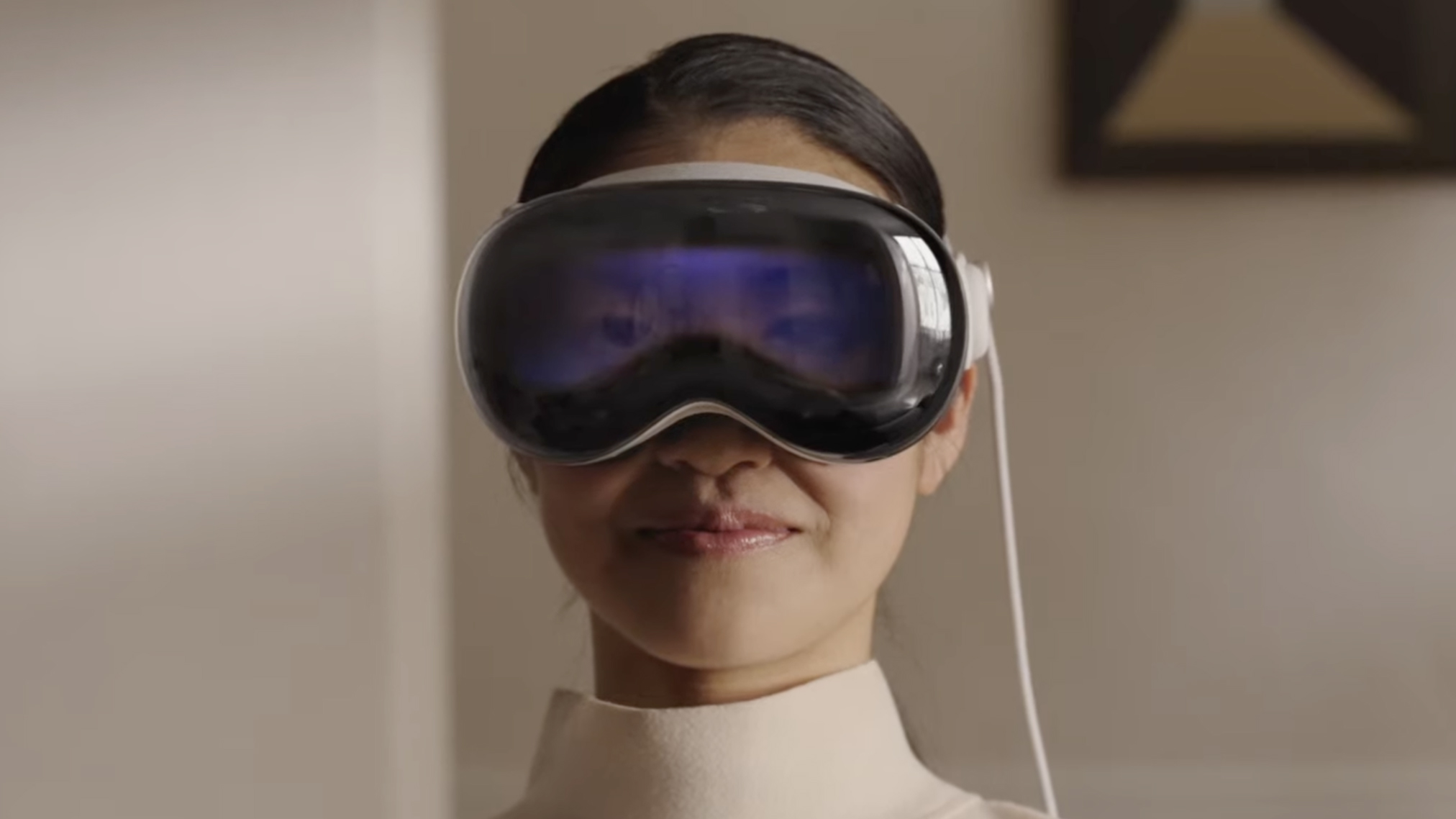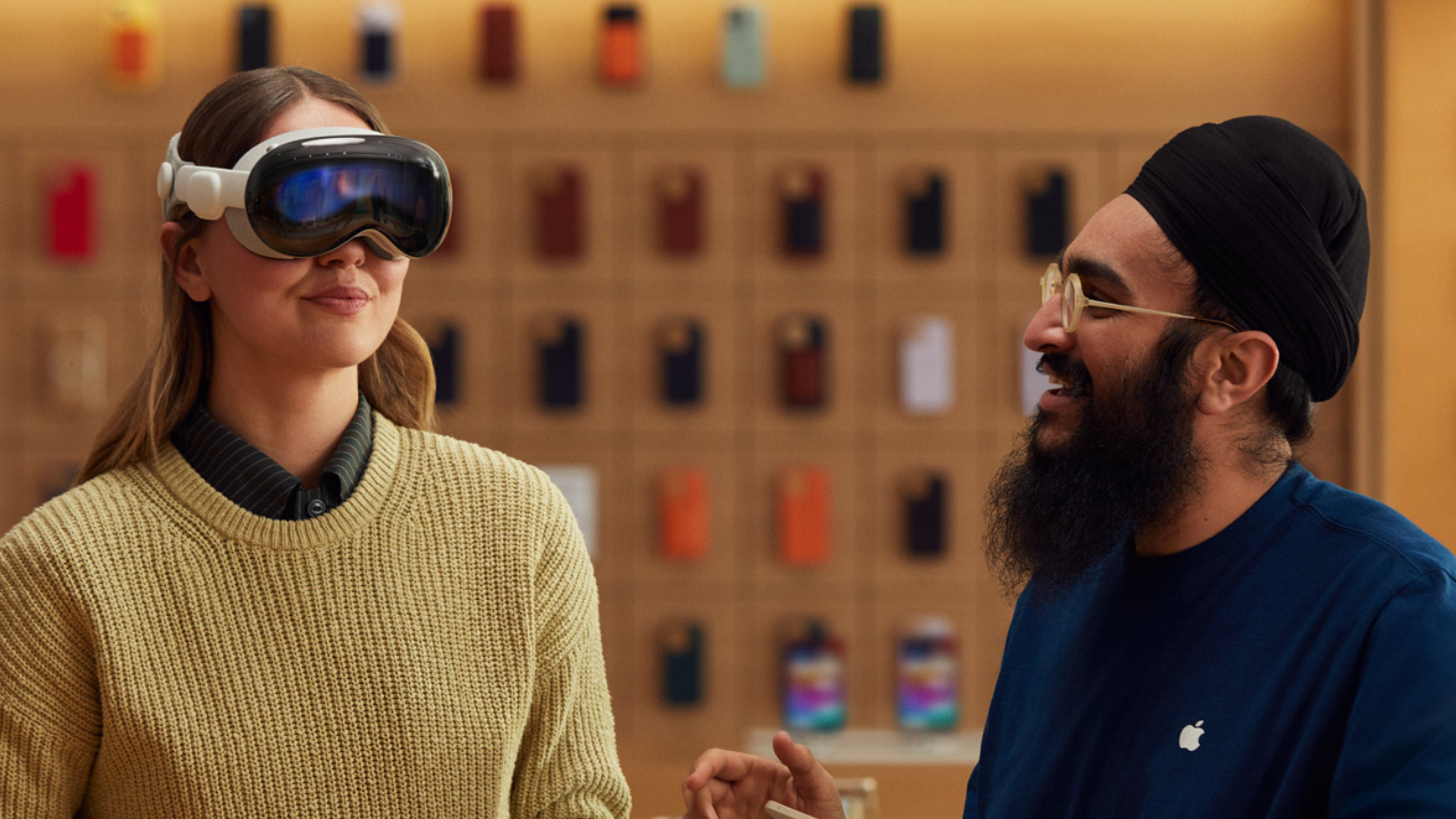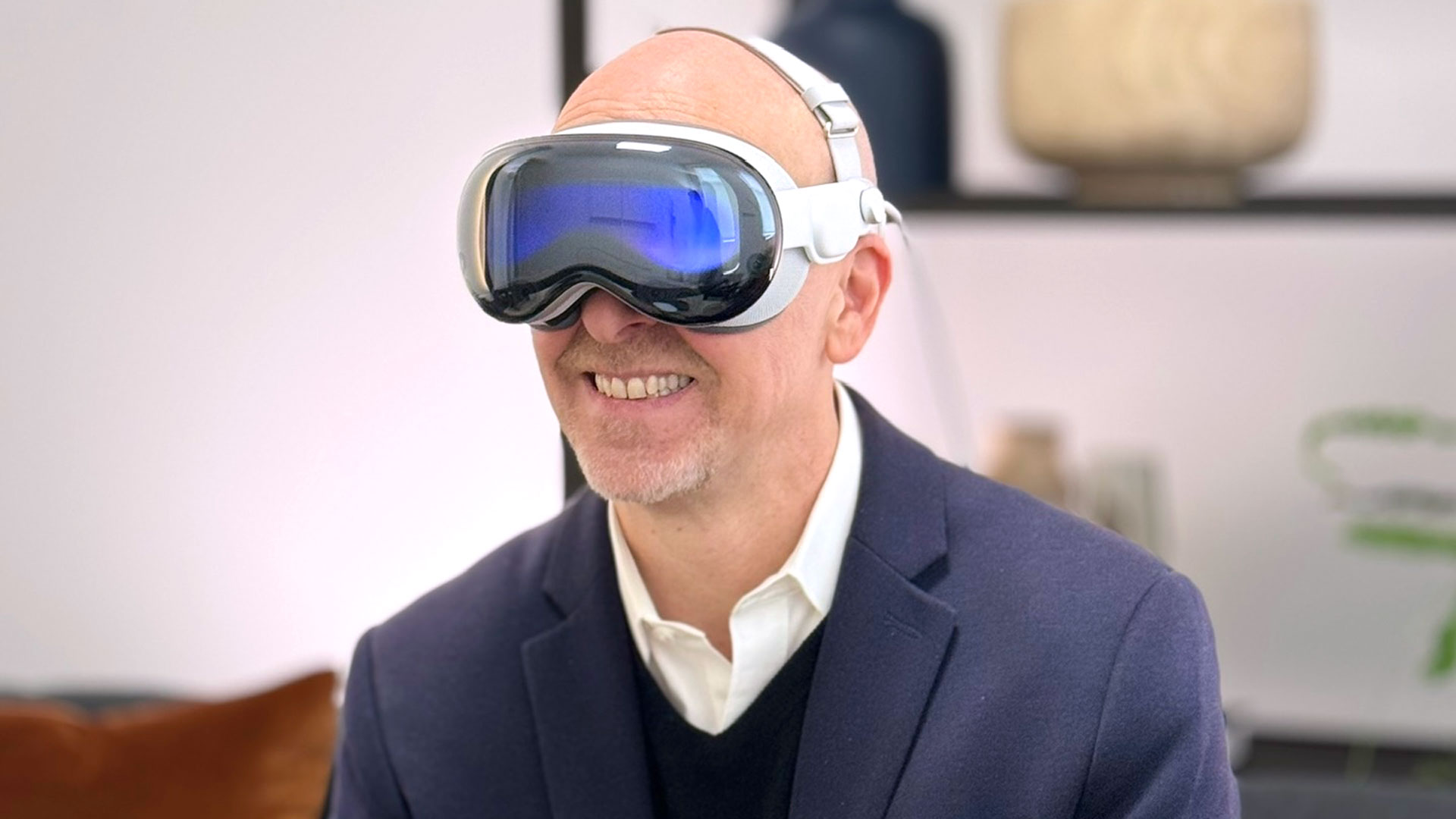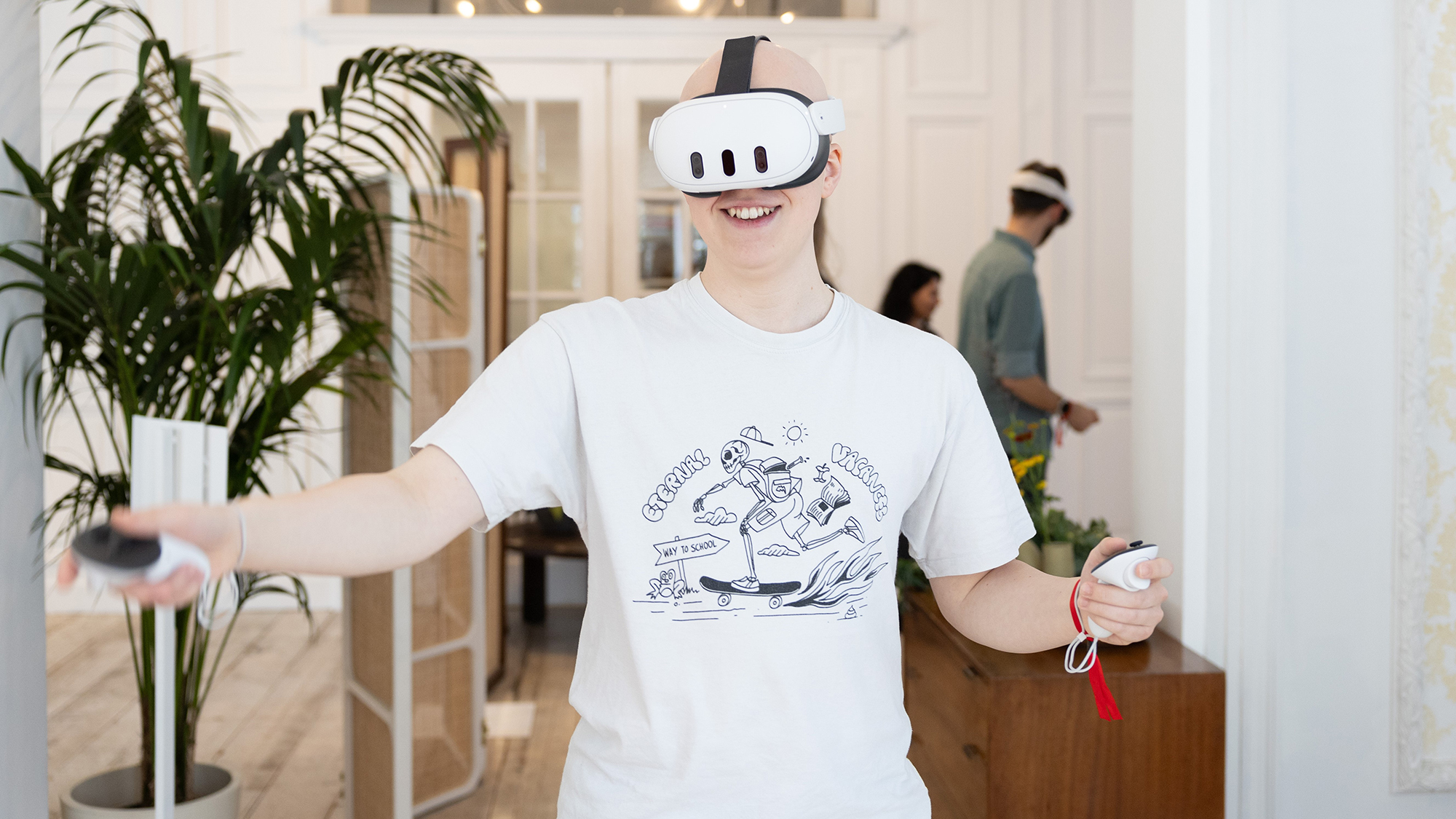Apple Vision Pro finally hits the UK – here's how you can try one, and why the Meta Quest 3 still beats it
The Apple Vision Pro finally goes on sale in the UK from today

It's just over a year since the Apple Vision Pro was revealed to a pretty mixed reception, and now the mixed-reality headset has finally gone on sale in the UK. Yes, you can now buy a Vision Pro directly from UK Apple Stores, if you have a spare £3,499 burning a hole in your pocket.
Apple's "spatial computing" headset, as it likes to call it, became available outside the US for the first time on June 13, when it was made available to pre-order in China, Hong Kong, Japan, and Singapore.
Two weeks later it was made available for pre-order in the UK, Australia, Canada, France, and Germany, and July 12 is the day those orders actually ship in the UK, and also the day it becomes available to buy in both real-world and online Apple Stores.

With a price tag that rises to £3,899 for the 1TB version (or £3,699 for the 512GB model), the Vision Pro isn't exactly an impulse buy, and that's why Apple is keen to give you demos in Apple Stores first. Here's how to book one of those – and why you should probably buy a Meta Quest 3 instead...
How to try out the Apple Vision Pro
If you fancy taking the Apple Vision Pro for a test-drive in the UK, you can now book a 30-minute demo at an Apple Store. Just click on the 'Book a demo' button on the official Apple Vision Pro page.
You'll then be asked to sign in with an Apple ID and choose your store. At the time of writing, there's good demo availability at most stores in the UK, so you shouldn't have any issues finding a slot.

What do the one-to-one demos involve? An Apple Store employee will scan your face to help ensure that the Vision Pro's Light Seal fits well. If you wear glasses, they can also scan your spectacles and find the right Zeiss inserts for you.
Get daily insight, inspiration and deals in your inbox
Sign up for breaking news, reviews, opinion, top tech deals, and more.
You'll then get taken through a largely scripted demo sequence, including teaching you the gesture controls to move around VisionOS. With the setup time included in the 30 minutes, though, you won't get to try all of the Vision Pro's features, like FaceTime calls. So expect it to be more of a taster than a full in-depth tour.
Should you buy an Apple Vision Pro?
You could be forgiven for forgetting that the Apple Vision Pro exists at all – after an initial burst of hype, the headset hasn't really maintained its momentum.
On its first anniversary, TechRadar's Editor-at-Large Lance Ulanoff neatly summed up the problem by stating "I love Apple's revolutionary headset, so why do I hardly ever use it?". The problems remain, in that software upgrades like visionOS 2 can't make the headset any lighter, fix the issue of "unintended isolation" or solve the "plain weirdness of wearing a computer on your face".

There's no shortage of incredible tech in the Vision Pro. Our Apple Vision Pro review found it to be "the most thought-through V1 piece of hardware ever". It also concluded that whatever you've read about the headset, "nothing quite prepares you for seeing it in person, putting it on, and experiencing for the first time Apple's vision for spatial computing". So a demo is arguably worthwhile for tech fans, whether you're thinking of buying one or not.
In a recent interview with The Sun, Apple CEO Tim Cook went so far as suggesting that taking a demo is an "emotional experience" and that it's now largely replaced his TV for watching new shows, as he lies back and treats it as a 100-inch ceiling projector. His other main use case is apparently as a multi-screen monitor for working and productivity.
But not many people are buying the Vision Pro, according to new IDC data (via Bloomberg) that suggests Apple won't even shift 500,000 units this year, despite it going on sale in the UK and beyond – by comparison, Apple sold over 230 million iPhones in 2023, according to Statista. One of the reasons for this is that Apple's headset has much cheaper rival that continues to offer a more affordable mixed-reality experience...
Why the Meta Quest 3 is still the better buy
by Hamish Hector, TechRadar's Senior Staff Writer and resident AR, VR and mixed reality expert
While people can argue that the Meta Quest 3 and Apple Vision Pro just aren’t comparable – specs-wise it’s like pitting a standard hatchback against a Formula One race car – there’s currently very little software that puts the Vision Pro to good use.
It might have a laptop-quality M2 chip, but it doesn’t offer a MacBook-like performance unless you connect it to a MacBook. Many of its games and apps are ports of iPad software, and most of its VR-based experiences are available on the Quest 3 and other rivals (or very similar apps are available on them).
Spatial video – a big selling point of the Vision Pro – isn’t even unique; using the Quest mobile app you can easily port all of your 3D images and clips to your Quest 3 and watch them just as you would on Apple’s device.

The only thing the Vision Pro does better is immersive 4K 3D cinema, thanks to support from apps like Disney Plus; although do you really want to watch a 3D movie all on your own when you could spend $3,000 / £3,000 / AU$5,000 on a seriously impressive home-cinema setup that your whole family can enjoy together, and still have enough left over for a Quest 3?
It’s not just that the Meta Quest 3 does most of what the Vision Pro can do for a fraction of the price; it can offer more of VR’s most compelling immersive experiences, simply because it has access to a much broader library of dedicated XR content.

From VR workouts in apps like Supernatural, to epic adventures in Asgard’s Wrath 2, to compelling multiplayer experiences like Population: One, and so, so much more, there’s a lot the Vision Pro can’t offer – and might never offer, because its unique hand-tracking controls and emphasis on more-static and less-active experiences make it a challenge to port games (according to software developers we’ve spoken to).
There are reasons to choose the Vision Pro over the Quest 3, but for 99% of people interested in VR the Meta Quest 3 is the smarter and better option – and it’ll only cost you $499.99 / £479.99 / AU$799.99.
You might also like

Mark is TechRadar's Senior news editor. Having worked in tech journalism for a ludicrous 17 years, Mark is now attempting to break the world record for the number of camera bags hoarded by one person. He was previously Cameras Editor at both TechRadar and Trusted Reviews, Acting editor on Stuff.tv, as well as Features editor and Reviews editor on Stuff magazine. As a freelancer, he's contributed to titles including The Sunday Times, FourFourTwo and Arena. And in a former life, he also won The Daily Telegraph's Young Sportswriter of the Year. But that was before he discovered the strange joys of getting up at 4am for a photo shoot in London's Square Mile.
- Hamish HectorSenior Staff Writer, News